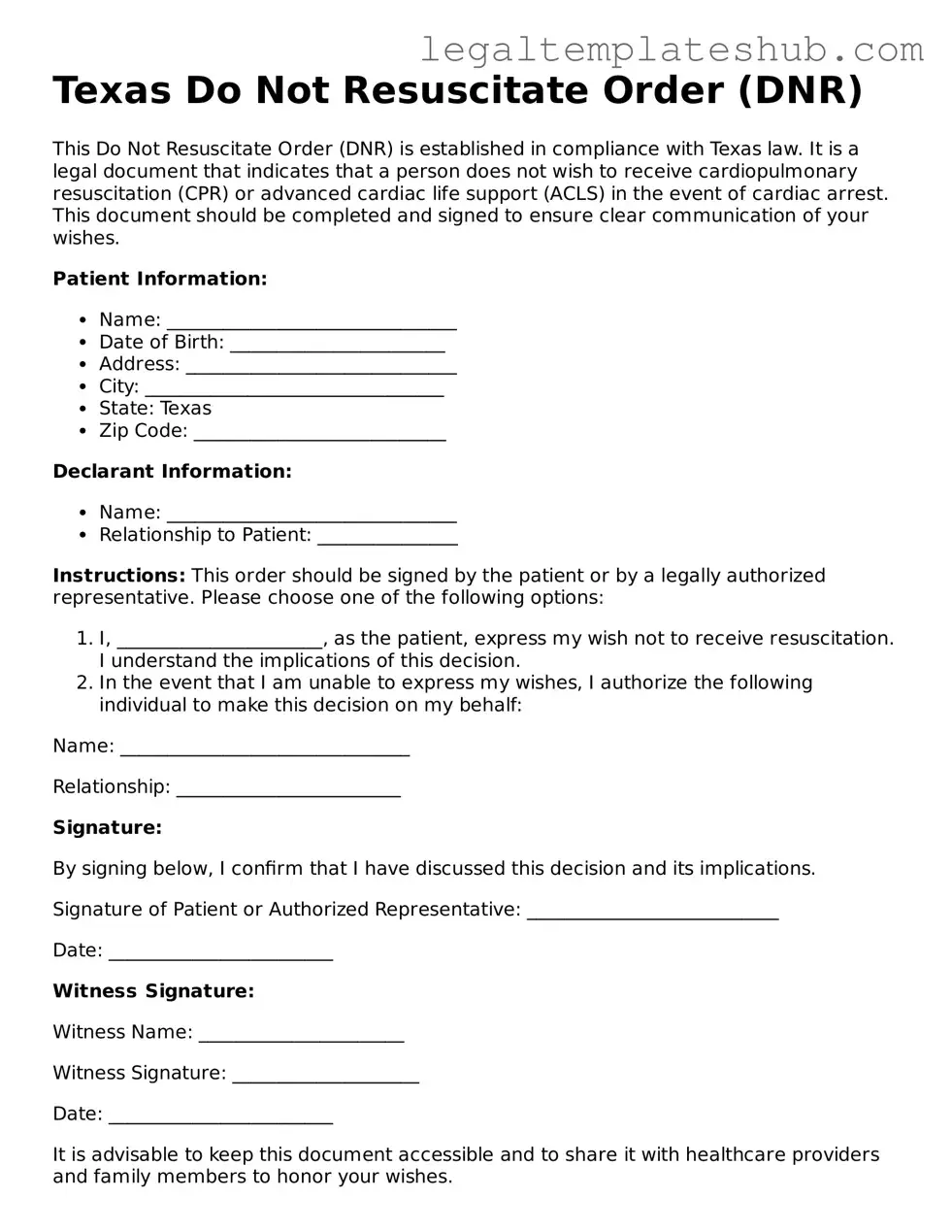Printable Do Not Resuscitate Order Document for Texas
A Texas Do Not Resuscitate Order (DNR) form is a legal document that allows individuals to refuse resuscitation efforts in the event of cardiac or respiratory arrest. This form is crucial for ensuring that a person's wishes regarding end-of-life care are respected by medical professionals. Understanding and completing this form can provide peace of mind for both patients and their families.
Take control of your healthcare decisions by filling out the Texas DNR form. Click the button below to get started.
Access Editor
